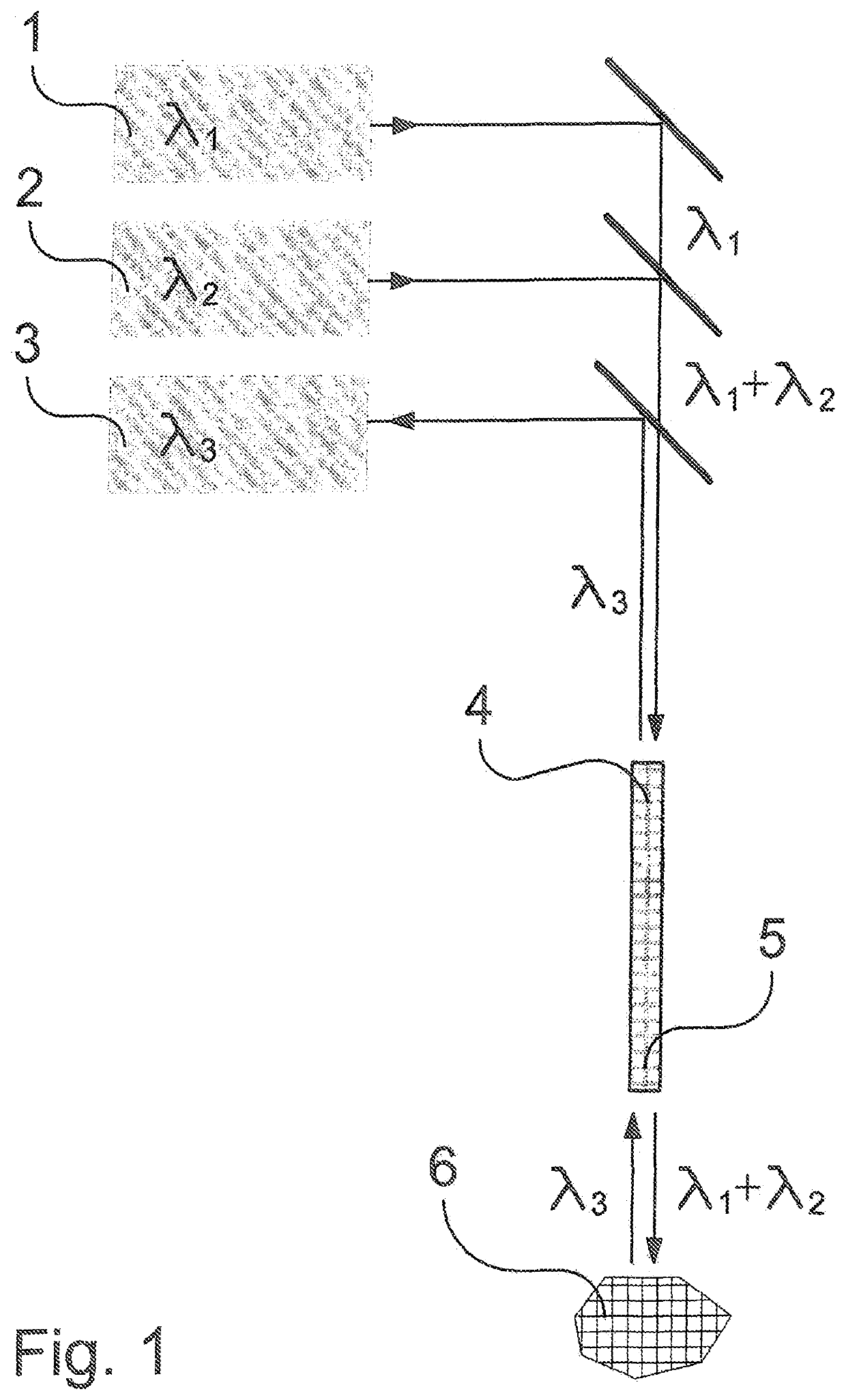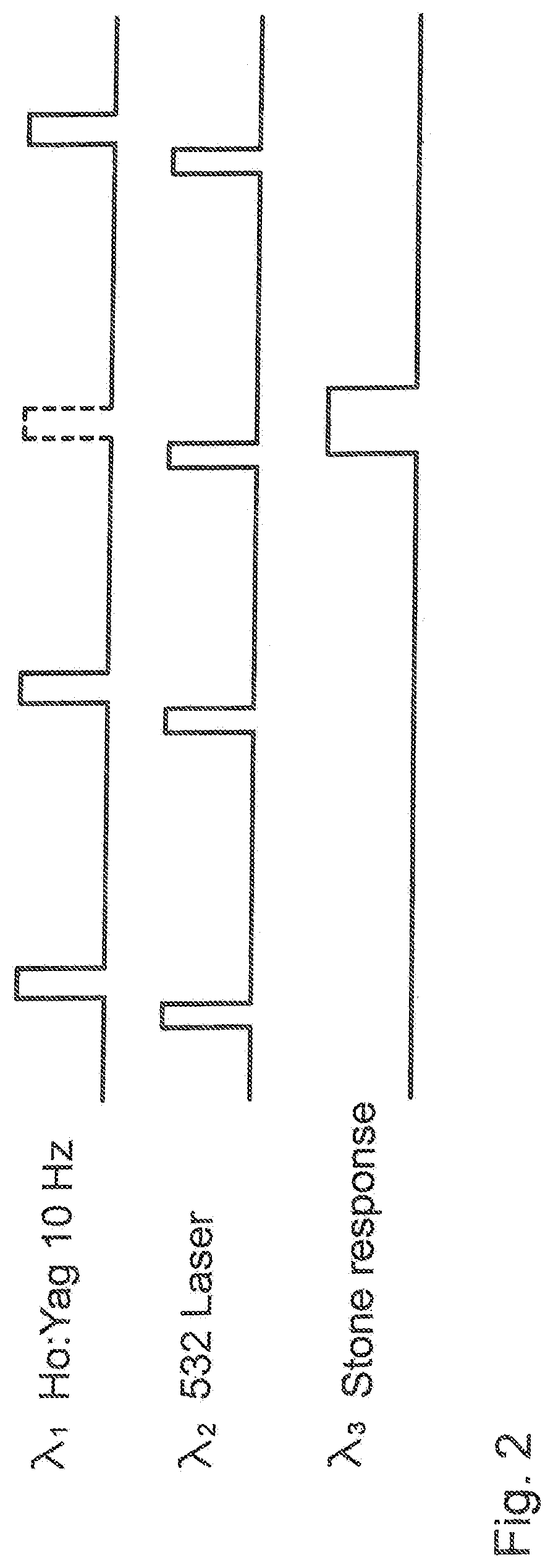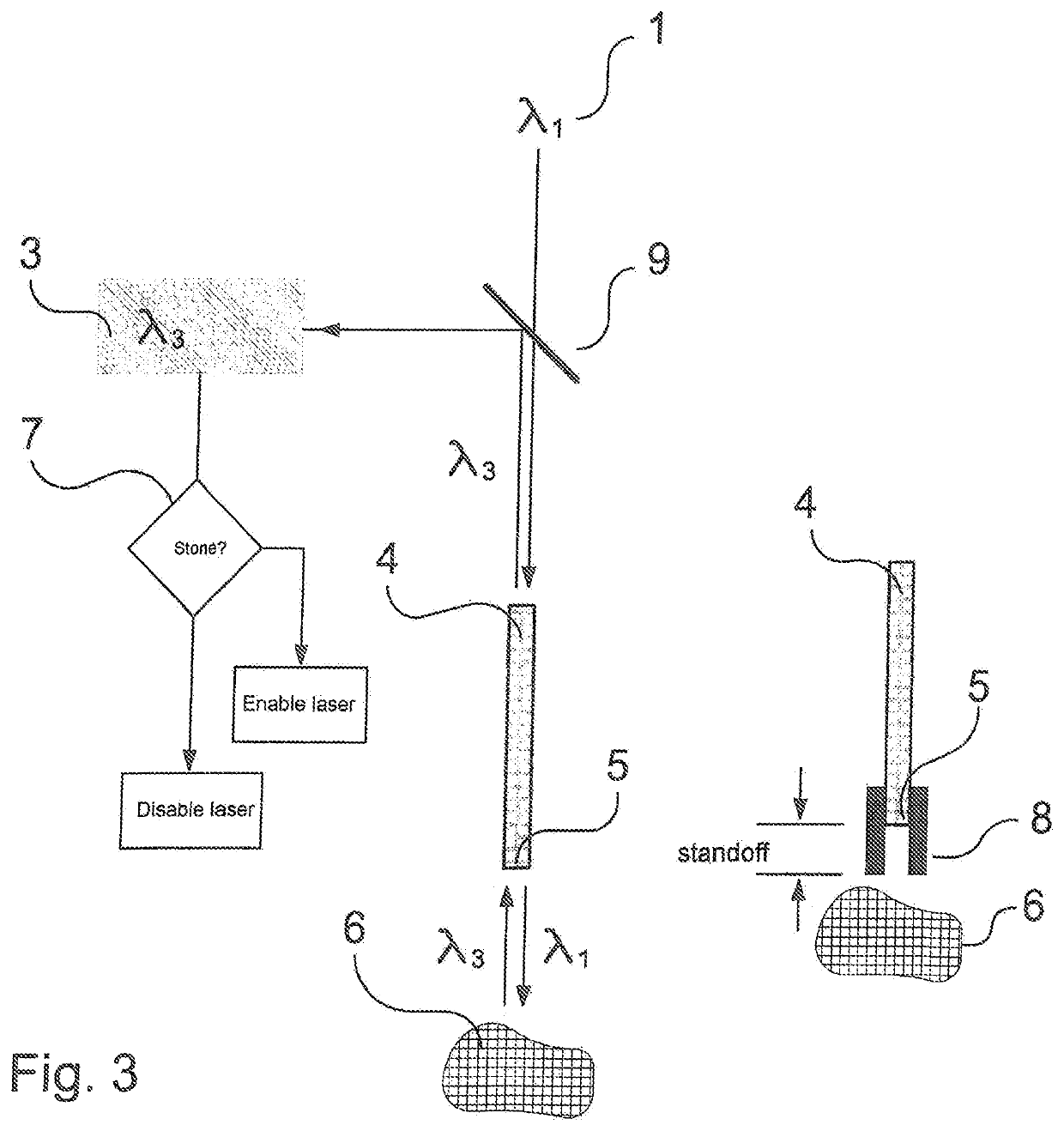Stone sense with fiber erosion protection and camera saturation prevention, and/or absence-detection safety interlock
a technology of fiber erosion protection and camera saturation prevention, applied in the field of laser surgery, can solve the problems of prolonging the operation time, compromising the safety of patients, and affecting the safety of patients, and achieve the effect of reducing erosion
- Summary
- Abstract
- Description
- Claims
- Application Information
AI Technical Summary
Benefits of technology
Problems solved by technology
Method used
Image
Examples
Embodiment Construction
[0016]As illustrated in FIG. 1, the system of the invention includes a conventional laser delivery apparatus that includes a laser 1 capable of delivering stone vaporizing or destroying pulses during a laser lithotripsy procedure. The system may also include a secondary light source, which could be a laser or LED light source 2 that serves to provide an aiming beam, but which could also be an endoscope light, etc.
[0017]The main laser 1 may, by way of example and not limitation, be a Ho:YAG laser that outputs pulses of wavelength λ1 at a frequency of 10 Hz. In the illustrative example where a secondary light source 2, which may for example be any pulsed UV-VIS-IR laser, is included to provide an aiming beam. By way of example and not limitation, the aiming beam may have a wavelength λ2 of 532 nm (green) that causes the stone to fluoresce at the point of incidence, and that also has a pulse frequency of 10 Hz. The outputs of the of main laser 1 and secondary light source 2 are injecte...
PUM
 Login to View More
Login to View More Abstract
Description
Claims
Application Information
 Login to View More
Login to View More - R&D
- Intellectual Property
- Life Sciences
- Materials
- Tech Scout
- Unparalleled Data Quality
- Higher Quality Content
- 60% Fewer Hallucinations
Browse by: Latest US Patents, China's latest patents, Technical Efficacy Thesaurus, Application Domain, Technology Topic, Popular Technical Reports.
© 2025 PatSnap. All rights reserved.Legal|Privacy policy|Modern Slavery Act Transparency Statement|Sitemap|About US| Contact US: help@patsnap.com



